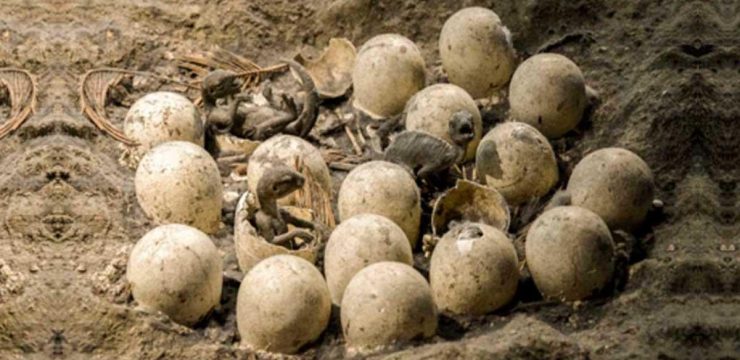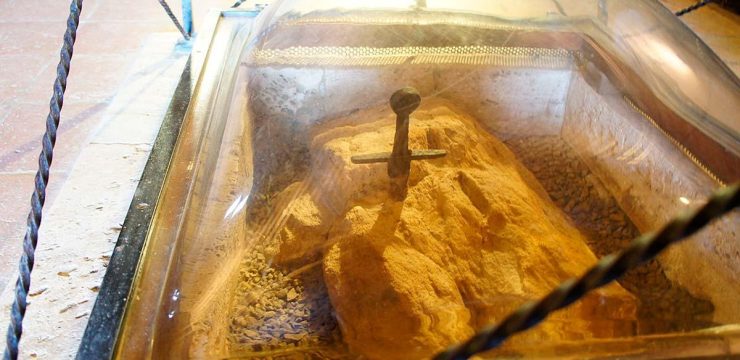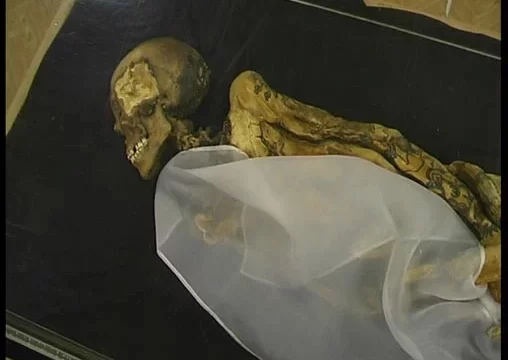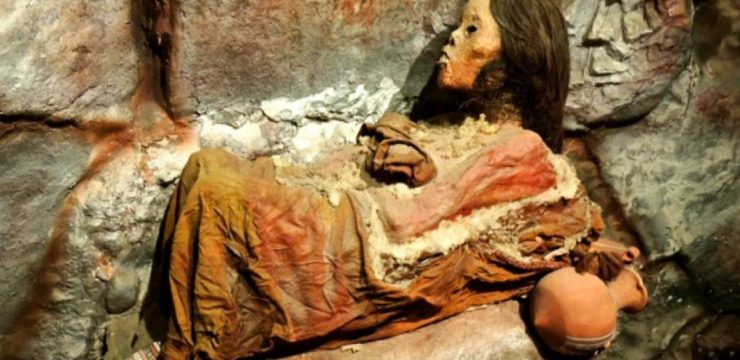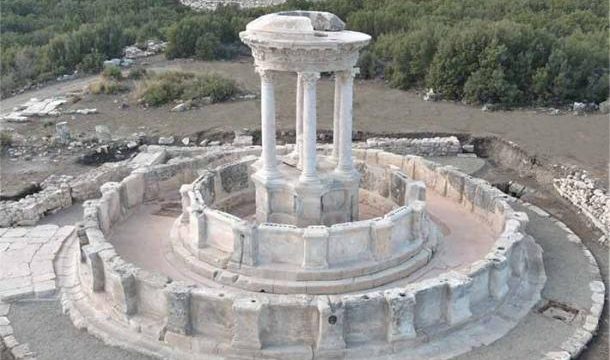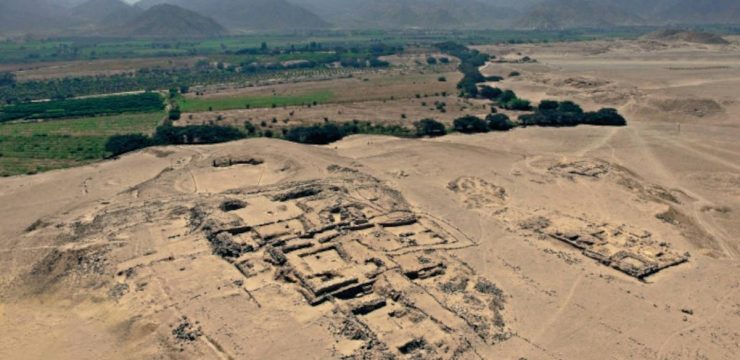In the heart of the Denon Museum in Chalon-sur-Saône, France, lies a deeply moving artifact that has captivated historians and visitors alike—a mummified hand of a child, still clutching a Roman coin. This small but powerful object draws us into a long-forgotten era, echoing stories of ancient Rome and revealing the fragility of life and the enduring customs surrounding death. Though just a single hand, this relic carries with it a profound narrative about a time when the Roman Empire stretched across continents and cultures, influencing even the smallest corners of the world, including what is now modern-day Burgundy.
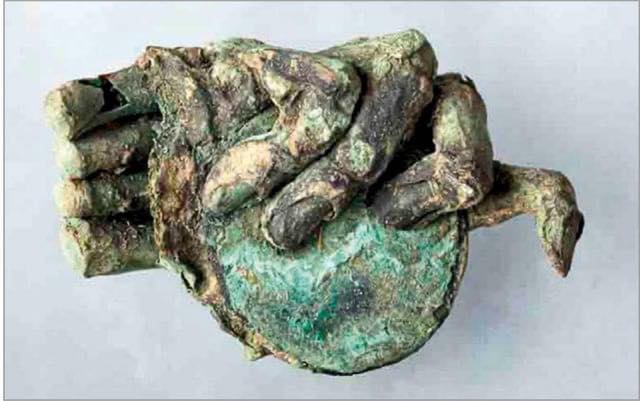
The story of how this haunting artifact was discovered is cloaked in mystery. While the exact details remain uncertain, experts believe the hand was unearthed somewhere within the Burgundy region of France, an area once deeply integrated into the Roman Empire. In Roman times, the town of Chalon-sur-Saône was known as Cavillonum. It served as both a military outpost and a key trade hub, playing a vital role in the infrastructure of Roman Gaul. Over the years, archaeologists have uncovered many Roman relics in this area—tools, coins, fragments of pottery—but few are as emotionally powerful or enigmatic as this tiny mummified hand.
What makes this find especially remarkable is not just the preservation of the hand itself, but the Roman coin nestled tightly in its desiccated grip. Mummification in Europe was relatively rare, especially outside of regions with arid climates like Egypt. In the cooler and damper areas of France, natural mummification was unusual, making this discovery even more extraordinary. Scientists suggest that the preservation likely resulted from the hand being buried in a sealed, dry environment—possibly a tomb or crypt that prevented decomposition. Still, the most compelling aspect of this artifact is the coin the child holds. Dated to the 2nd century AD, the coin is thought to have been minted during the reign of either Marcus Aurelius or Antoninus Pius, two emperors who significantly shaped Roman history.
This detail leads to fascinating questions. Why was the coin placed in the child’s hand, rather than the mouth, as was typical in Roman burials? In Roman funerary tradition, coins were commonly placed in the mouth of the deceased as an offering to Charon, the mythical ferryman who transported souls across the river Styx into the afterlife. Known as Charon’s obol, this coin acted as a toll to ensure the spirit could journey safely into the next world. The fact that this coin was instead gripped in the child’s hand may suggest a departure from typical burial customs. Was it the result of a hasty burial? Or did this family follow a localized variation of Roman tradition? Perhaps they simply sought to ensure the child’s soul would not be forgotten, holding the coin tightly for a journey still to come.
This artifact offers a poignant glimpse into life—and death—in Roman Gaul. It reflects the blend of Roman and Celtic traditions that defined the region. Roman customs often interwove with indigenous practices, especially in outlying provinces. The coin in the child’s hand hints at Roman influence in the household, suggesting that even in rural parts of Gaul, Roman belief systems held sway. The fact that this burial item was so carefully preserved indicates the child may have held significance within their community, and that the ritual surrounding their death was both meaningful and intentional.
The scientific analysis conducted by researchers at the Denon Museum adds further depth to this mystery. Utilizing X-ray imaging and CT scanning, specialists were able to study the internal structure of the mummified hand without damaging it. Their findings confirm the hand was preserved in a remarkably dry environment, likely sealed off from air and moisture. The wear on the coin, including signs of prolonged circulation, offers clues about its origin and use before it ended up with the child. While there is little written evidence detailing Roman burial practices specifically for children, some archaeologists theorize that infants and young children often received less formal burials due to their perceived innocence. However, the symbolic gesture of placing a coin in the child’s hand could point to a deep desire to protect and guide them even in death—a forgotten ritual or a deviation shaped by emotion and urgency.
The image of a child’s mummified hand grasping a Roman coin serves as a powerful reminder of the ancient world’s struggles, beliefs, and enduring humanity. It speaks not only to the rituals surrounding death but also to the love, fear, and hope that parents and communities carried for their young—even in times of hardship. In the Roman worldview, death was not an end but a transition. A coin was more than a token; it was a necessity for the soul’s safe passage, a physical object that represented care in the afterlife.
The Denon Museum itself is a place where such deep connections between past and present come alive. Named after Dominique Vivant Denon, a famed archaeologist and the first director of the Louvre Museum, the institution houses a diverse and impressive collection of artifacts. These items span centuries and civilizations, yet few hold the intimate emotional gravity of the child’s mummified hand. It stands apart as one of the museum’s most evocative exhibits—one that continues to spark dialogue among historians, archaeologists, and everyday visitors alike.
Ultimately, this artifact encapsulates the far-reaching influence of the Roman Empire and the enduring mysteries it left behind. Even in a small town in what is now France, Roman customs and beliefs left their mark in the most personal of ways. The child’s hand, preserved by time and clasping a coin meant for the journey into eternity, reminds us how fragile and sacred life once was. Through this simple, haunting image, we are transported back to a time when mythology and mortality danced hand in hand—when a single coin could open the gates to the next world.
